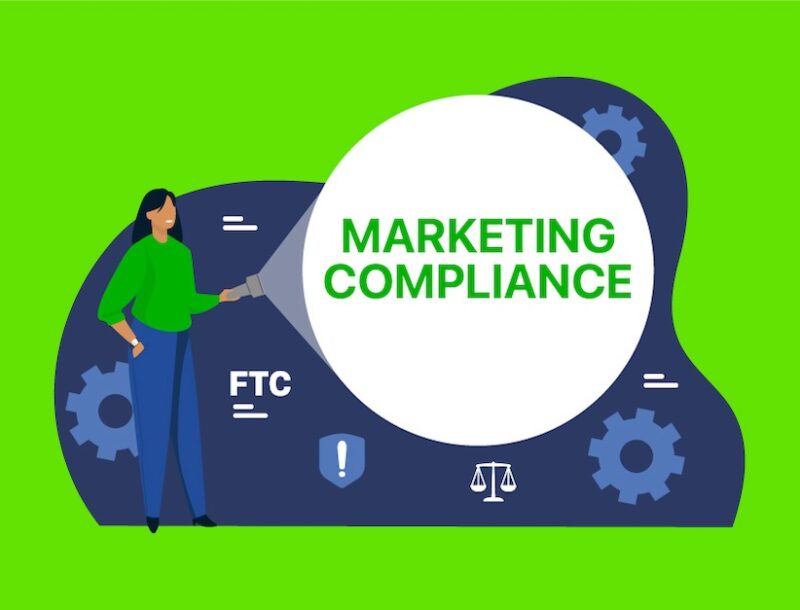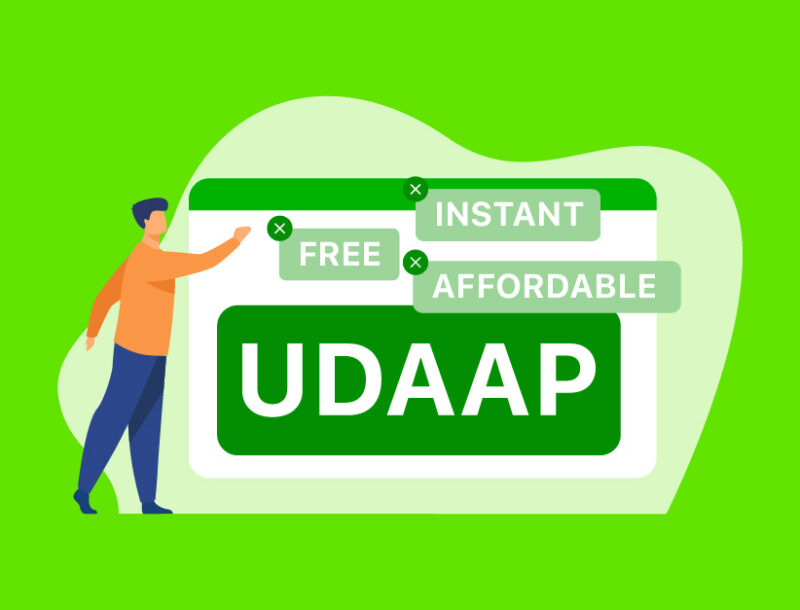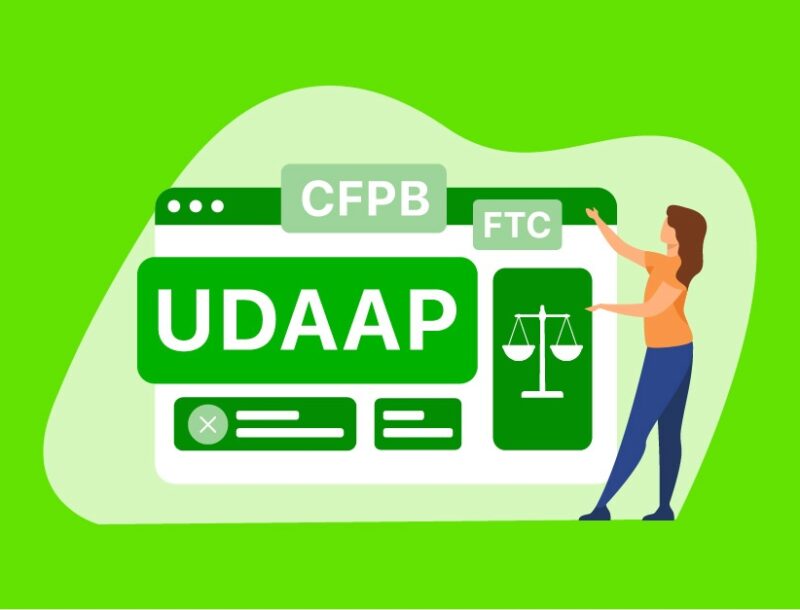Episode 20: BaaS: Compliance as a Competitive Advantage Pt. 1

Episode Description:
This week’s COMPLY Podcast is part one of a conversation all about BaaS (Banking-as-a-Service). Paul Wilmore, PerformLine’s COO, sits down with Tanner Mayo, President of FedFis and The BaaS Association, and Amanda Swoverland, Chief Compliance Officer at Unit to discuss:
- The current state of this rapidly growing industry
- How fintechs are building trust with consumers as we see more a shift to the less traditional banking model
- Their stance on who is responsible for regulatory compliance and consumer protection in this space – the bank, the fintechs, or both.
- The expertise in compliance that banks can offer these fintechs given their history of regulatory oversight.
Show Notes:
- 4 Key Fintech Compliance Trends You Need To Know: https://bit.ly/3lc4ebE
- Partner Banks: Marketing Compliance Trends You Need to Know: https://bit.ly/3Tmgnan
- Why Partner Banks Love PerformLine for Marketing Compliance: https://bit.ly/3llQCub
- The State of Marketing Compliance for Partner Banks and Fintechs Infographic: https://bit.ly/3ZQSwCj
- The Compliance Checklist for Bank-Fintech Partnerships and BaaS Providers: https://bit.ly/3YNRhSX
- Connect with Paul: https://www.linkedin.com/in/paul-wilmore-6b1646/
- Connect with Amanda: https://www.linkedin.com/in/amanda-swoverland-4a6ba671/
- Connect with Tanner: https://www.linkedin.com/in/fintechcowboys/
Subscribe to COMPLY: The Marketing Compliance Podcast
About COMPLY: The Marketing Compliance Podcast
The state of marketing compliance and regulation is evolving faster than ever, especially for those in the consumer finance space. On the COMPLY podcast, we sit down with the biggest names in marketing, compliance, regulations, and innovation as they share their playbooks to help you take your compliance practice to the next level.
Episode Transcript:
Ashley:
Hey there COMPLY podcast listeners and welcome to this week’s episode. This week’s podcast is part one of a conversation all about BaaS or Banking-as-a-Service. Paul Wilmore, PerformLine’s COO, sits down with Tanner Mayo, President of FedFis and The BaaS association, and Amanda Swoverland, Chief Compliance Officer at Unit as they discuss the current state of this rapidly growing industry, how fintechs are building trust with consumers as we see more a shift to the less traditional banking model, their stance on who is responsible for regulatory compliance and consumer protection in this space – the bank, the fintechs, or both. And the expertise in compliance that banks can offer these fintechs given their history of regulatory oversight. Thanks for listening and enjoy!
Paul:
Hello everybody. My name is Paul Wilmore, so in today’s edition, we’re gonna talk about compliance as a competitive advantage, which I just, I love the title. It’s probably a little bit of an oxymoron, but I’ll tell you in today’s environment, I don’t think it’s ever been more true. I’m joined today by two great folks who are really living this every day. Amanda Swoverland, who is the Chief Compliance Officer at Unit as well as Tanner Mayo, who is the president of FedFis, as well as a co-founding member of The BaaS Association. So maybe we can start off talking a little bit about kind of the, just what’s happening in the industry right now, right? The explosion has been incredible. Tanner, you seem to touch just about every aspect of this industry. So I’d love to get your perspective on kind of how has the industry evolved over the last two years, and why do you think that it’s seen such incredible growth?
Tanner:
You bet. Yeah, so a couple of numbers I pulled for you, Paul. So we’ve seen, I believe it was 43% growth Year-over-Year in the number of BaaS banks, which is just, I mean, in a highly regulated space, right? And I mean, we’re pretty used to things taking a little bit of time. That’s pretty explosive. So I believe the numbers were, we were at 75 BaaS Banks, partner banks last year, 116 as of this year. So, I mean, that’s probably the first point for us all to see that this is a big thing. And I mean, you know, per the OCC chairman that fintech is here to say, right? And so I think those two things go hand in hand, which is pretty cool. And I think, you know, to all that growth, we definitely see in the financials of these organizations, top 1% in pretty much every earnings category. Obviously, we all understand Durban and interchange. That’s a pretty easy part. And then if you know, being the card side of the house, then if you think about the lending side, I mean, think about folks like Lending Club, Rocket Mortgage, et cetera, right? There’s been a lot on that side, just digitization that’s brought up opportunities. So we’re seeing a ton of revenue heading towards the BaaS banks, which is a big driver.
Paul:
Yeah. Oh, that’s awesome. Amanda, you sort of sit in between the two. I’d love to get your perspective on kind of what you see as far as growth and what do you think the big drivers are of what we’ve seen recently?
Amanda:
Yeah. Well, you know, I think it’s, it’s actually a really exciting time for banks and for fintech partnerships. Even, even amongst all of the change in the industry right now, you know, really from where we sit technology providers that are entering this space to offer financial products in partnership with a bank. You know, at the end of the day, banking’s about trust, right? If we, even if you just go to core banking principles is about trust. So these technology providers have been spending years building trust with their customer bases that are already existing, and they really understand who these customers are, and they’re in a really great position to offer them very customized products and services. And you know, the ecosystem’s ready for change. We actually did a market survey, doing some research on, you know what do these consumers and small businesses want.
Amanda:
And it was remarkable how ready for change people are of like, where they will get their banking products and services from. And so, like from our seat where we look at it, it’s kind of a win-win-win situation, right? And kind of to what Tanner was saying before but really at a needs-based principle, right? So the technology companies that are offering these products and services, they get to deepen their relationships with the customers that they’re already serving. The end customer actually wins because they get a highly customized product that really benefits them and is what they want to use. And the banks win because they’re now getting to reach a customer segment that they normally wouldn’t be able to have access to, and they’re able to serve a new community in that particular way. So at the end of the day, we really look at it as a moving kind of from a what I’ll call like a one size fits all banking infrastructure to now with these partnerships, these highly customized banking products that are able to serve communities in a way that really fits their needs and benefits them. So, you know, we see that this change as a really positive change.
Paul:
Yeah. I think you’re right on, and I think the fintechs are filling a void that quite frankly, the big banks just weren’t able to fulfill. But you bring up a really important question, which is this idea of trust, right? And so people used to go to their bank because they trusted the bank. How are the fintechs able to build that trust when it’s sort of a new relationship? Like how are they bridging that feeling of trust or do consumers no longer really require that level of trust?
Amanda:
Oh, I think they do. I think that trust is very much there. And I think that the fintechs deeply care about the customer experience and the trust. I look at the partners that we work with, and they are deeply interested in that customer experience and having it be a positive experience to their end customers. And I think that you know, a lot of the evolution that we see is allowing people to do what they do best, right? And the banks are very present in these relationships, right? I mean, they are very heavily involved with those partners to make sure that they understand the rules and the regulations that come with it. And so I, you know, I do think that because there was already trust in that app or whatever, that piece is that customers are ready to use those products.
Paul:
Yeah, I guess in some ways it’s, they’re building such a personalized experience that that trust is almost embedded in that experience itself, right?
Tanner:
Yeah. I think too, Paul; if you look at, think of it as community, which fits community banks, right? It’s just redefining community, right? And I think to the point irregardless of geography these days, that’s been a big opportunity. And then I think brand is interesting too, right? So maybe affinity is a better word. Lifestyle brands just really get me going, you know? I mean, think about people’s emotional relationship with Starbucks, you know, I mean, this is a big deal, right? And we even see it, you know, with things. I think that definition of fintech is definitely beginning to turn, right? I mean, 7/11 are they have fintech? I guess so, right? And, but I think we’re transitioning less around companies that are dedicated financial services direct to consumer, and people that see it as a sticky way to engage their trusted customer base. And Amanda’s point, you know, so I think about, I mean, Target is a good example, right? There’s a lot of folks out there that really love Target. And so if you built financial services in there, think of it from a rewards perspective, right? It’s very similar to what they did with Starbucks, planting Starbucks inside of a Target, right? Just in a digital way to kind of engage that loyalty and, you know, communities. It’s pretty cool.
Paul:
Yeah. Look, I think your idea around community is absolutely the right one, and right. A lot of these fintechs are creating those sort of microcosms of community and maybe that’s where that stickiness or that trust really is almost embedded in that. So I think you’re right on the mark there.
Amanda:
Yeah. And we actually use the term embedded banking, right? Because it’s not just fintech, right? Like they’re a lot of these are technology companies, but it’s more about embedding banking into an already existing product or service. And to Tanner’s point, you know, being it creates that sticky experience that we that, you know, we all have loyalties of that in some way, shape or form.
Paul:
And it’s amazing how fast a lot of these fintechs for the new apps create that sort of lifestyle brand, right? And you’re right; it’s become such a customized experience that lifestyle brand almost clicks immediately because it, like, that app gets me or gets where I’m going or what I need. So it’s an interesting time. Let me move on a little bit to the regulatory side, because I think, you know, it’s just such an evolving landscape right now. A lot of players involved, a lot of folks trying to regulate this. I can’t say that it’s all been as straightforward or clear as we would all like, but I’d love, Tanner, maybe you can tell me a little bit about, the big question out there is who’s responsible when it comes to compliance and consumer protection, right? Is it the partner bank? Is it the fintech? Is it some combination of both? Would love to have your perspective on that.
Tanner:
Yeah. I so, I think the word responsible is an interesting one. The bank is legally responsible, right? And so I think we could all agree on that sort of the buck stops here, the ultimate, you know, liability lies with the chartered institution without a doubt. I think to some of Amanda’s points, basically all of the rest of us, right? Whether that’s me quoting a number, right, or Amanda providing infrastructure or all the others in the ecosystem, I think we’re all responsible, right? Ultimately, that’s an important piece of this. I think likewise if you look at the regulators, I mean, a lot of this, I mean, some of us have been at this longer than others, and I mean, it was the Wild West just a few years ago, and you go back 5 or 10, and I mean, I don’t even think we all knew what we were talking about back then.
Tanner:
It was so new, and we definitely hadn’t invented the words yet, right? But think about something like, I don’t know, the Southwest Airlines credit card right, there have been issuing banks for like 50 years, you know? So I think this is a, it’s a newer knee-jerk response from the regulatory side, but much of what we’re doing, with the exception of things like crypto and some interesting money movements, right? The bulk of the things that are going on in BaaS have been going on for frankly, decades, right? In one form or another. So I think that’s important. But ultimately, you know, my stance would be legally the responsibility is the bank, but the social responsibility is all of us.
Paul:
Yeah, very well put. Amanda, what’s your feeling about kind of this changing regulatory landscape and what kind of impact it’s having on this industry?
Amanda:
Yeah, spot on Tanner, I agree. I often look at the airline and hotel-branded affinity cards that are in my wallet that I use every day. And I’m like; we’ve been doing this for a really, really long time. It’s just a new set of brands, right, that are showing up on the top of a card, and we’re using APIs instead of the mailer that’s going out and landing in somebody’s inbox at home, right? Conceptually, it’s not that different, right? Except we’ve moved to a more technology-based way of doing it in the number of brands have expanded. Cause, you know, why it works. Those cards are successful. It’s been successful for that. So, you know, I think that everybody in the ecosystem has to be responsible and has to play, you know, with that.
Amanda:
So I think Tanner outlined exactly where those responsibilities lie. And we are very much a company that is, you know, we like to information share about best practices with others and really talk about how we think about things. You know, we publish a lot of our guides and our requirements in a very open-source way because we truly believe that we should all collectively make the ecosystem safer, right? And share best practices and do things that are going to promote that responsibility across the ecosystem. So I think that’s really important. A lot of things are already in place today, too, right? A lot of, there probably will be some level of new regulation if you look back to when prepaid went through this evolution and some new regulation, you know, came out of that.
Amanda:
But at the end of the day, a lot of it’s already there, right? The big service company act, all of the regulatory guidance around third-party risk management practices from the regulators. So I think it’s really about, you know, kind of coalescing around that existing regulatory set and using that guidance and kind of streamlining that. And then if new regulation needs to come to be a little bit more specific to this, then I think the, you know, the industry’s pretty quick to adapt. We’re a pretty nimble industry, so if there’s new regulation that comes, we’ll always welcome it, especially if it adds clarity right to the system.
Paul:
I think that’s right. And you’re both right. I mean, this has been around for a long time, right? I’ll date myself probably a little bit far back than I should, but I was part of a group that started Juniper Bank, which was one of the original neobanks, full digital back, in the year 2000. And BB&T was our partner bank at the time; we were using their charter. But I think what was different about then than now is all of us that started Juniper Bank, we were all bankers. And so we are coming from a bank to start another bank. And so we are already well aware of all the regulatory climate and knew that we were embedded in kind of our DNA. It feels like today a lot of the fintechs are technology first, bankers second, or bankers third in the line. And so a lot of ’em aren’t going into that, you know, with compliance or regulatory view as their number one agenda. And so I think in some ways it feels like that puts a lot of pressure on the partner bank to provide that oversight that the fintech itself doesn’t have in their DNA. Am I reading that right? Or how would you kind of view that in today’s climate? Either one of you, sorry.
Tanner:
I would just, I would piggyback. I think Amanda said something that was very important there, a really key vocab word that we’re all looking for more of—guidance.
Paul:
Yeah.
Tanner:
I think that the lack of guidance, right, is something that’s a struggle. Maybe not for your third, fourth-time banker, to your point but certainly for the fintech newcomers who, I mean, look, we’re going back to date ourselves a little bit, let’s say 10 years ago. I think in that perspective, it was very much the mindset that bankers are stupid, right? I think we’ve all seen that mentality seriously shift with some tough learning lessons on the fintech side, right? Which is a real positive, because that’s felt like a very adversarial relationship for a long time, that both sides are starting to see the merits of the other, you know, which is a positive. But to the point on the, if you’re sitting on the fintech side of the house, the lack of guidance means we generally know what we’re trying to do.
Tanner:
We generally know how to do it, but the detail’s lacking. And so I think what we’ve seen recently, you know, a lot of stumbles could be related to that, right? And I think, look, crypto is sort of an obvious space, right? We’re leaving the regulated financial industry with money, and then we’re gonna debate down to the millisecond what the moment in time was right. And what the rail was. It gets a little messy. And so I think you’ve gotta have some of the regulatory moves that we’ve seen. Unfortunately, I think it’s been less carrot and more stick of late. The hope is that we’ll see more guidance in the future, but I keep coming back to that with the lack of guidance that it actually leaves the regulatory body in a position where they can pick and choose the battles, which sort of philosophically sets the line, right? Which I gotta understand that from their perspective too.
Paul:
Yeah, yeah.
Amanda:
I think I may be a little bit of a unique in the sense of being at being at a tech company. But being a banker at heart you know, I started my career as an examiner, you know, for the Federal Reserve. I spent some time consulting and then spent, you know, 15 years at a community banks. So like community banking and compliance from the community banking seat is like in my DNA, right? Like, I’ve been the examiner asking the tough questions. I’ve been at the bank, you know, having to answer the tough questions that are coming. So I think we somewhat take a slightly different approach because like largely if you look at my team, it’s people who have been in regulation before, have, you know, worked for OCC or for federal regulators in some way, shape, or form, or they’ve ran divisions at banks, right? About those types of things. And so we, to your point, Paul, kind of try to marry that, bringing bankers into the tech side of things in trying to be that translator between the two. And we find that that actually helps a lot of having that translation table kind of sitting in there, being able to see both sides of the picture to see that. And I do think it is actually quite helpful.
Ashley:
Thanks for listening to this episode of the COMPLY Podcast. Be sure to tune into our next episode where we’ll air part two of this conversation of these industry thought leaders. If you’re in this BaaS-partner bank-fintech ecosystem, we have several resources for you that I’ll drop in today’s show notes, including a blog on marketing compliance trends that both fintechs and banks need to know. And a compliance checklist for fintech partnerships and BaaS providers. As always for the latest content on all things marketing compliance, you can head to content.performline.com. Thanks for listening and we’ll see you next time!


